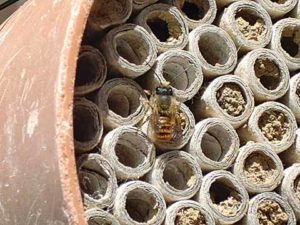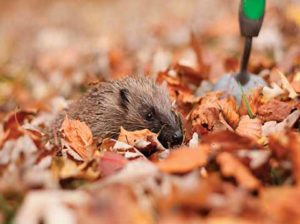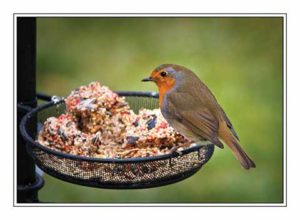Make your garden a real wildlife winter wonderland
Sally Welbourn looks at the presents you can provide for the wildlife that visits – or will visit – our garden this winter
Published in December ’17
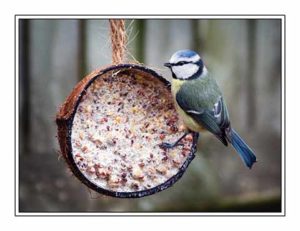
Blue tits thrive when they are fed with difficult-to-feed-from feeders, which cannot be used by larger, hungrier and more aggressive birds
credit: Terry Fisher
As winter sets in, wildlife is separated into those species struggling to survive, savouring every morsel of food available to them, and those that are hunkered down, hibernating through the colder months. The long hours of December darkness add another complication for wildlife that needs to forage for food, making every minute of every day a matter of life and death for some.
A safe haven for wildlife could be found in a wildlife-friendly garden. Many people believe that winter is a quiet time for gardens, as they become drab in colour, but it is in fact the ideal time to prepare for spring, and also provide shelter and food for wildlife in great need of it this time of year.
HOW TO LOOK AFTER HEDGEHOGS:
There is no greater joy than discovering a hedgehog is visiting your garden. Whilst it is common knowledge that hedgehogs are in decline in the UK, there are still ways to entice them into your green space. Finding suitable habitat is one of the biggest challenges for hedgehogs for their hibernation, so the first thing you can do is create a ready-made home for them in your garden; hedgehog homes are available to buy, and simple to make. Smaller changes you can make include making small holes in the base of your fence to allow hedgehogs to move around between gardens, increasing their chances of finding food and finding a home. Once you have a hedgehog, you might like to supplement its diet to help it stock up for the big sleep. Be sure to use meaty (not fish) cat food occasionally, and leave out fresh water, but never milk. A gardener looking after their wild space with wildlife in mind, will leave longer grass to increase the biodiversity and potential for a varied menu for our prickly friends. Hedgehogs will also prefer ‘wild’ spaces in a garden, using clumps of brambles, moss and leaves under hedges, to nest. If you’re having any late bonfires, remember to check them for hibernating hedgehogs before lighting them.
HOW TO LOOK AFTER BIRDS:
This time of year, birds don’t have the luxury of hibernating when the going gets tough (and cold). Instead, their search for a plentiful supply of food becomes their only focus to survive the winter. In December, the fruits and berries of autumn begin to dwindle, and as the temperature drops, it becomes increasingly difficult for birds to find food and water. So it’s up to us humans to provide food and water for them, using bird feeders and bird baths. We also don’t have to wait until spring to put up bird boxes – as smaller birds will find them useful to roost in overnight during colder months. If you make these changes in your garden, ensure you maintain your bird friendly areas by making sure water doesn’t get frozen, cleaning out bird boxes every so often, and washing out bird feeders. If food is left and gets wet, bacteria can form which could be harmful to birds. Equally, make sure that water sources aren’t too low to the ground, as other wildlife, such as our beloved hedgehogs could get stuck in them.

Ensure ponds have a shallow side or a ramp to allow ducklings, hedhehogs and even amphibians a way out in emergencies
Credit: Bryony Baxter
HOW TO LOOK AFTER INSECTS:
Insects often use gardens to hibernate in. For example, bees dig holes in the ground, butterflies might sleep in sheds, and wasps and ladybirds take shelter under loose bark on logs. Whilst hibernation might already be underway, after having found some nice nooks and crannies in your garden, there are always things you can do to create the perfect hibernation location for late-comers, or for next winter. Try tying up bundles of bamboo and sunflower stems and leaving them out – you could even create a bug or insect hotel (creating small places to hide using natural materials found in the garden) in a dry spot in the garden. If you spot a slow-moving insect that hasn’t hibernated yet, provide a small amount of equal measures of water and sugar on a sponge or spoon to give them an extra boost of energy to get them through the winter. In early spring, look out for the brimstone butterfly – they are usually one of the first to emerge from hibernation.
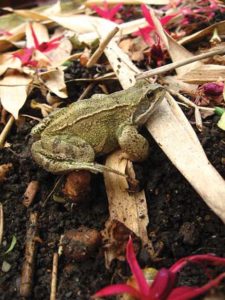
Amphibians (frogs, toads and newts) will repay your making a habitat for them by eating slugs and snails
Credit: Caroline Perget & Mark Hutchinson
HOW TO HELP FROGS, TOADS AND NEWTS:
Amphibians make a great contribution in reducing the pests in our gardens – their main diet consists of slugs, snails and insects. But as it turns colder, they too will be looking for a safe retreat for the winter. They too can benefit from man-made shelters, ready prepared with some damp leaves and moss inside them, as well as some twigs on top to camouflage them. Put your ‘frogitats’ somewhere quiet and sheltered in your garden to accommodate your watery wildlife visitors. Creating a pond in your garden is the best way to look after frogs, toads and newts when they come out of hibernation but they will also use log piles and compost heaps. Ponds or a water feature are the best place for them to breed if you want to provide a home for them all year round.
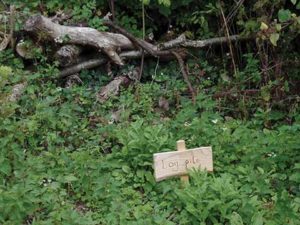
he hedgehog-height signs are optional, but log piles left in gardens are great for invertebrates, which in turn attract other wildlife
Credit: Sally Welbourn
What’s in it for us?
Not only do we get the warm and fuzzy feeling of helping declining species of wildlife (hedgehogs, butterflies, moths) but we also get the joy of watching wildlife in our gardens or green spaces, all year round. If birds know of a reliable place to get food, they will come back, not matter how small or large the garden is. So, give a gift to wildlife this year, and we guarantee that you’ll enjoy the rewards as much as they will.
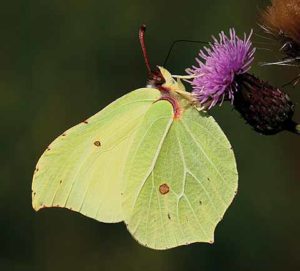
The brimstone is one of the few butterflies to hibernate, in holly, bramble and ivy, so beware when ‘tidying’ these up in winter if you often see brimstones in your garden
Credit: Ken Dolbear
Please visit www.dorsetwildlifetrust.org.uk/wildlife-gardening to download our wildlife friendly gardening leaflets for advice and inspiration this winter.
